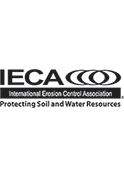
Ready, Set, Spring into Planting
March 2025
 We don’t need a spring-forward time change to fast-track planting preparations for commercial growers, garden centers, landscape professionals and municipal service managers. At home, we’re leveraging more daylight to plot garden projects and other outdoor growing endeavors. And regardless of your climate, there’s a universal starting line for all things outdoors: Memorial Day. (Though we’ll argue Mother’s Day is when consumers are thinking spring flowers.)
We don’t need a spring-forward time change to fast-track planting preparations for commercial growers, garden centers, landscape professionals and municipal service managers. At home, we’re leveraging more daylight to plot garden projects and other outdoor growing endeavors. And regardless of your climate, there’s a universal starting line for all things outdoors: Memorial Day. (Though we’ll argue Mother’s Day is when consumers are thinking spring flowers.)
This shoulder season is a pivotal time in our growing calendar. Greenhouse growers are readying nursery stock and retail containers and flats of perennials, annuals and shrubs. We’re also thinking fall, on the cusp up mum planting to cultivate fall color.
With much ado in March, how do you prioritize soil health, plant nutrition and garden-focused efforts? Lucky you! Rely on JRM and the Soil Moist experts to guide your journey.
Expedite Efficiency in the Nursery
With nurseries in high production as we approach the spring retail season, there are ways to elevate efficiency, reduce labor requirements and minimize plant loss — a trifecta for success. While plugs, minicells and small seed trays require a lot of attention, adding a polymer granular soil amendment can reduce irrigation by 50%. Incorporating sugar-grade polymer, powder or fines into the soil at the root level helps enrich the growing medium, as well.
 Compound the water-saving and nutritional benefits by mixing Soil Moist and Soil Moist Fines or Hydro, which work together to promote healthy root growth with half the watering. This nursery best practice is like plant “insurance” for retailers, as well. The Soil Moist combination reduces transplant shock.
Compound the water-saving and nutritional benefits by mixing Soil Moist and Soil Moist Fines or Hydro, which work together to promote healthy root growth with half the watering. This nursery best practice is like plant “insurance” for retailers, as well. The Soil Moist combination reduces transplant shock.
Let retailers know how you fortify nursery plants so they can market the advantage to consumers with our informative tags that explain how Soil Moist works. Also, retailers can position an eye-catching point-of-sale (POS) display of take-home products to increase consumer basket size.
Tips for Transplanting
As ground temperatures warm to a consistent 50 degrees, when it’s safe to plant, many of us are evaluating existing perennials and shrubs in the landscape to determine if a healthy split is in order. Native grasses, hydrangeas and other popular plant picks can crowd beds as they mature. Make the most of what’s already growing on your property by dividing and transplanting them.

Timing is key, and early spring or fall is ideal for this process to avoid transplant shock that can occur during hot summer months. Prepare by digging a hole for the divided plant and amending the soil by adding Soil Moist Transplant, which contains a blend of polymers and beneficial mycorrhiza, fertilizers and rooting hormones. Beneficial fungi helps colonize plants and is an important additive since most of our soils have been stripped of these nutrients during construction and land development.
Dig up the plant at the drip line, keeping as much of the root ball intact as possible. Sometimes, a root ball will naturally separate, but you may need to divide it using a shovel. Do so carefully, ensuring each root ball has roots and shoots. Once the root ball is removed from the ground and split, fortify soil in the original hole before replacing the divided plant into the bed.
Once you backfill the holes, water the plants. Because Soil Moist Transplant reduces irrigation requirements by 50%, you’re giving newly planted perennials a head start on healthy establishment.
Spring Break Section
 If spring break travel plans are on your March calendar, head out of town without worrying about who will water your houseplants while you are gone — or forgetting to assign the duty to a willing helper. Returning home to wilted plants is no “welcome back” treat.
If spring break travel plans are on your March calendar, head out of town without worrying about who will water your houseplants while you are gone — or forgetting to assign the duty to a willing helper. Returning home to wilted plants is no “welcome back” treat.
Soil Moist Vacation Mats alleviate the burden. The mats are made from water-storing polymer woven cloth and absorb up to 2 quarts of water. Simply lay the mats on a baking sheet or tray, add water, and place houseplants on the saturated mat, ensuring container bottoms have exposed drainage holes. Roots will soak in moisture as needed for up to three weeks.
What’s in Store for Spring?
Why not store more water so you can save time, money and resources? Tell us how you use Soil Moist products in your home or business. We look forward to hearing from you!
Follow Us, Visit Us, Share with Us
Keep up with JRM during our travels and stay on top of the latest news by following us on Instagram @jrm_inc. Also, tap into our library of resources for guidance, ideas and news. We’re pleased to introduce our latest catalogue, and contact us any time.
Back to Blog »






